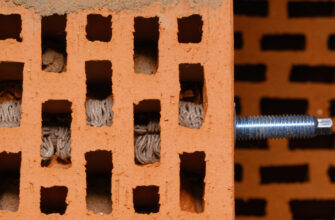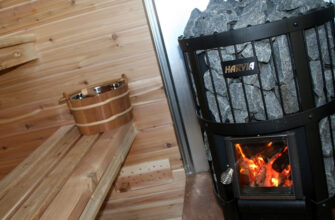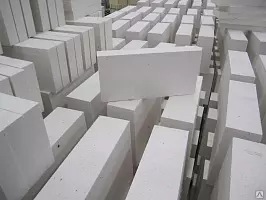Carpeting protects against noise and cold. This kind of flooring is soft, elastic, colored and not very expensive. As color, and the texture only this material is very diverse. This is why carpeting has been displayed on floors so often.. What kind of carpet is and how to properly lay the carpet, read this article.
Which carpet is better
Which carpet to choose depends not only on financial but also on other aspects.. The carpet consists of four layers. The most important for users are two: upper fleece and lower part – lining. 
Fleece (pile) -this is the top layer, on which we walk. Is a braid made of natural fibers (wool, coconut, sea grass) or artificial, or a mixture of one and the other. May be:
- woolen pile – soft and flexible, nice and warm. Calms the room. Not electrified, therefore does not attract dust - easy to clean;
- made of polyamide – soft and elastic, resistant to wrinkles and abrasion. Difficult to absorb water, therefore spilled liquids are not absorbed deeply. Has beautiful colors, that, Unfortunately, fade quickly;
- polypropylene – it is extremely wear-resistant and durable material. Minus – dents, eg, under the pressure of heavy furniture.
on, what is the sole of the cover made of, depends where we can put the carpet. Can be made from:
- felt – felt-based carpet can be laid on any base. Felt bottom makes trimming the flooring easier and prevents fraying. The joints of the parts are invisible;
- sponge – the sponge protects well against noise and cold. Resistant to moisture. The flooring made on it can be laid directly on a hard surface (concrete, tile). Should not be placed on boards, parquet, plywood, because in contact with varnish, the sponge crumbles easily;
- jute – the floor covering can be installed in rooms with underfloor heating (withstands high temperatures). Has very good adhesion. Except natural jute, artificial is also used - more resistant to moisture.
- rubber – protects against noise and cold. Tear-resistant. Can only be placed on concrete. Destroys other grounds (enters into a chemical reaction with them). Carpet with rubber road pad, therefore rarely found in apartments.
We recommend watching the video how to choose the right carpet
https://youtu.be/5vYRfAH9Y04
According to the expert
How to calculate the required amount of flooring for a room?
When you have already decided to buy a carpet, you need to accurately measure the dimensions of the room, in which the material will be laid on the floor – always take into account the largest width and length of the room. Depending on the size of the room, a covering with a width of 2, 3 or 4 m.
All niches must be considered during measurement. Up to the received sizes, add 5-10 cm as stock. If it is necessary to connect parts of the coating (especially with pattern), it is necessary to buy a floor covering with an additional margin for the corresponding docking, so that you can pick up a drawing. Pay attention to the direction of laying the pattern on the carpet.
How to lay the carpet properly?
There are several ways to install carpets:
- normal styling – the material is simply spread on the floor and fixed with baseboards;
- laying on glue – the material is glued to the floor with a special glue;
- laying on stretch marks – the material is attached to special hooks located around the perimeter of the room;
- fastening to double-sided tape ( double-sided self-adhesive tape).
note! Before laying the carpet with your own hands, you need to properly prepare the base. It should be flat, flat, no cracks, dry and clean. Remember, that before installation, you need to spread the carpet in the room for at least a few hours. Special, when the carriage has been improperly performed, eg, folding the material in half. Before joining the carpet, pay attention that the connections between the individual parts are perpendicular to the window and directed through the entire room. Try, when will you put the carpet, reduce the number of joints to a minimum. When it's already carpeted, respectively, stripped down, tuck it loose in the room and run it on the walls.
What method of installing the flooring to choose?
It is best to glue the floor covering all over the surface.. In small bedroom, just stick with double-sided tape. Remember, that the base needs to be filled and cleaned prior to coating. If you have floor heating in your apartment, choose a synthetic jute flooring and glue it over the entire surface. See video in this article “How to lay carpet on concrete”
Where, what carpet?
Living room. Most frequently used rooms visited by guests. The carpet here must be resistant to abrasion. Best To Use Polyamide Blended Carpets, cropped and velor.
Bedroom. Here the carpet may be less durable, softer and higher nap. Velor works well. Exceptionally good - wool materials, they absorb moisture from the room and release it as steam. The air in the bedroom becomes less dry, which means healthy.
nursery. The carpet must be antibacterial, resistant to abrasion, as well as soft and pleasant to the touch. Velor and mixed finishes are best..
Where carpet is not laid
The carpet is not very moisture resistant. Therefore, they should not be placed in the kitchen or bathroom.. Floor panels or tiles are better here. On the price label you will find the symbols, indicating, what are the advantages of carpet and for which rooms it is suitable. 
Carpet covering, as a carpet
Cut to size and upholstered carpet can successfully replace traditional carpet. If we want to put a carpet on a wooden floor, then it is worth choosing a felt-based flooring.
Carpet natural covering
Natural carpet is made from organic raw materials: herbs, stems, vegetable fibers and animal hair. They are valued primarily for their vapor permeability and ecological aesthetics.. Besides, rough texture of natural fibers is an excellent massage for feet. Natural carpets, non-allergic and antistatic. Natural carpets, provide comfort, allow you to get a warm and safe floor that is equal to a small amount of work and money. Their advantage is completely natural origin., and absolute biodegradability.
Vegetable carpet
Supporters of soft flooring, as well as organic materials, can choose a carpet of plant origin:
- from agave stalks - is durable and resistant to abrasion. Has a natural, strict appearance, in a rich range of shades, patterns and textures. Carpet should not be installed in the bathroom or kitchen, since agave fibers under the influence of moisture can change shape and size.
- coconut fiber – obtained from the fibrous portions of the pericarp of the coconut tree. Coconut fiber flooring is hard and prickly, their advantage is durability and low cost.
- from sea grass – more resistant than other grass fiber flooring, dirt-resistant, therefore can be used in kitchens. Soft sea grass flooring, and therefore, more comfortable.
note! The softest carpet is made from mixed fibers., 37% corn hair, everything else is PET fiber, obtained by processing. The carpet is very durable, does not wear out, and any dirt can be easily removed with water or a mild detergent. Also characterized by high resistance to ultraviolet radiation.
Animal wool carpets
Ecological raw materials, from which the flooring is made is also wool, obtained from sheep. Sheep wool carpet, on jute backing very flexible, elastic and very durable. The natural moisture content gives it antistatic properties and the floor coverings become a stabilizer of indoor air humidity. Wool insulates perfectly from cold and noise. The durability of this coating is determined by the height of the rune., its density and type of weave - the lower and denser the fleece, the more durable.
Good to know
Carpet covering, indoor, where allergy sufferers live, must be natural first of all, and therefore, manufactured without the use of harmful substances. Not less important, so that it does not collect dust.
It is best to use elastic coatings, e.g. carpet on a rubber backing. Flexible floors keep the spine free when walking.
If you choose carpet, it is worth choosing this, where the material is impregnated with a special substance, inhibiting the development of dust mites, fungus or mold, as well as bacteria.






